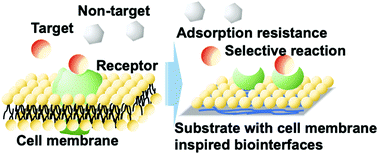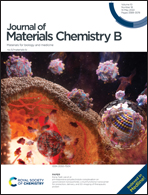Cell-membrane-inspired polymers for constructing biointerfaces with efficient molecular recognition
Abstract
Fabrication of devices that accurately recognize, detect, and separate target molecules from mixtures is a crucial aspect of biotechnology for applications in medical, pharmaceutical, and food sciences. This technology has also been recently applied in solving environmental and energy-related problems. In molecular recognition, biomolecules are typically complexed with a substrate, and specific molecules from a mixture are recognized, captured, and reacted. To increase sensitivity and efficiency, the activity of the biomolecules used for capture should be maintained, and non-specific reactions on the surface should be prevented. This review summarizes polymeric materials that are used for constructing biointerfaces. Precise molecular recognition occurring at the surface of cell membranes is fundamental to sustaining life; therefore, materials that mimic the structure and properties of this particular surface are emphasized in this article. The requirements for biointerfaces to eliminate nonspecific interactions of biomolecules are described. In particular, the major issue of protein adsorption on biointerfaces is discussed by focusing on the structure of water near the interface from a thermodynamic viewpoint; moreover, the structure of polymer molecules that control the water structure is considered. Methodologies enabling stable formation of these interfaces on material surfaces are also presented.



 Please wait while we load your content...
Please wait while we load your content...